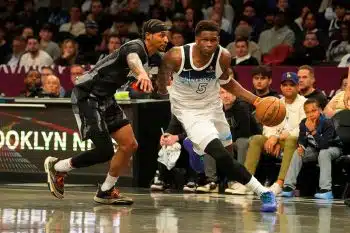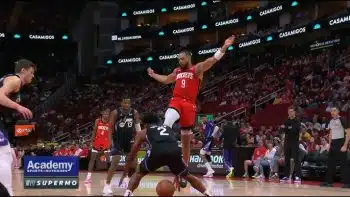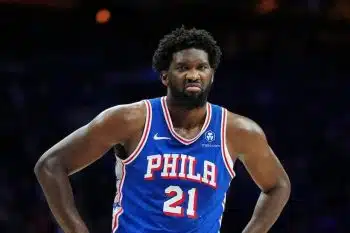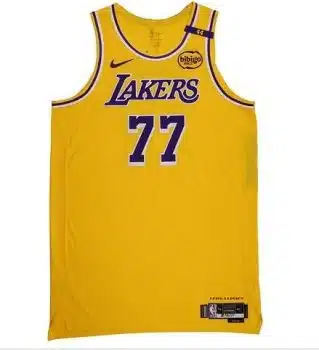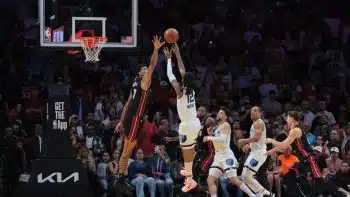NBA
NBA PM: Round-Number Psychology and Triple-Doubles
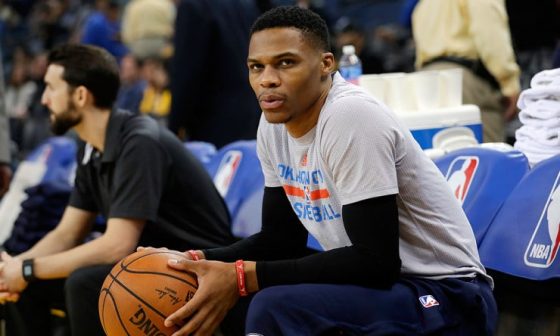
Human obsession with round numbers occupies a curious corner of psychological study. It’s a phenomenon that dates back millennia, with applications in some of the most visible areas of history. If they were called the Nine Commandments, would they occupy quite the same level of historical significance?
Research suggests the answer is no, and also tells us several other fascinating things about the mind’s desire for stability within numerical patterns.
A study at Pace University displayed a pair of digits on a screen, and asked responders to press a button in front of them only if both numbers were even or both numbers were odd, and therefore not if one was even and the other was odd. It took subjects an average of 20 percent longer to press the button when a pair of odd numbers came up compared to a pair of even numbers, suggesting what researcher Terence Hines called “the odd effect” – it literally takes the average human mind longer to process odd numbers.
In the consumer world, the effect shows a little differently. It’s well known within sales industries that prices ending in “.99” have been proven to lead to higher purchasing rates, but a 2015 study gave us more context:
Rounded prices ($100, $10, $5) are processed more fluidly by the brain, leading to more reliance on feelings and emotion within purchasing decisions. Non-rounded prices ($13.99, $199.99), though, are processed less fluidly, and therefore produce a higher subconscious reliance on cognition and reason.
Best of all, though, is the human response when we know we influence these numbers in our lives. A 2010 study found that we will exert ourselves far above normal levels to perform just above a certain round numerical threshold, rather than just below it. Professional baseball players are about four times more likely to finish with a batting average of .300 than an average of .299; high schoolers taking the SAT test are more likely to retake it if they fall just below a round number than if they fall just above one.
There’s no question the human mind carries a distinct, subconscious attachment to the emotional significance of certain numbers. These psychological roots form the basis for superstitions, laws and even life or death in some cultures. They’re deep, and they’re visible everywhere.
* * * * * *
Nowhere in sports is this phenomenon more obvious than with basketball’s triple-double.
The basis for this one goes back about as far as human records exist. The vast majority of human societies (with a few exceptions) have operated using a base-10 numerical system, with most psychologists in general agreement about the source: The number of fingers we have. Yep, it’s that simple.
And on its face, the triple-double is a great way to get that psychological kitten purring. Three numbers all at 10 or higher is much more powerful to the brain than just one or two, and the fact that most triple-doubles represent a distinctly positive team contribution by the player in question just reinforces the association.
Here’s the equally logical reason why our growing obsession with the stat is fundamentally flawed, though: Exactly how positive a contribution they represent is an incredibly variable factor, and there’s even evidence that certain triple-doubles do not represent a cumulative positive.
To prove it, let’s turn to the numbers.
Before John Hollinger was the Executive VP of Basketball Operation for the Memphis Grizzlies, he was a savant-like journalist/analyst who created a number of metrics. The most popular is likely PER (Player Efficiency Rating), but another that has several practical uses is Game Score.
Game Score, still housed on basketball-reference.com, is a stat designed to give a single numerical representation of a player’s statistical productivity in a single game. This is naturally a number that leans heavily toward offensive contributions, since most box score elements track offensive events (and the ones that don’t are limited indicators of defensive contributions). This is fine for triple-doubles, though, since they’re generally far more weighted to the offensive end anyway.
Using Hollinger’s Game Score, we can aggregate the 350 or so “best” NBA games played since 1983-84. Exactly 378 games have been played with a Game Score of 40 or higher, if we’re satisfying our mind’s desire for round numbers. From a statistical standpoint, nearly all of these games would rank among any objective list of the 400 or 500 best games played in this time period by a single player.
Know how many of these 378 games were triple-doubles? Twenty-one. That’s roughly 5.5 percent.
Yes, barely one in 20 of the best statistical performances over the last 30-plus years was a triple-double. These figures hold for more recent timelines. In fact, they even drop below 5 percent since 2000. If you’re ranking each of these games in order of Game Score, you have to scroll down all the way to row 22 to find the first one that was a triple-double.
Okay, so it’s not all so gloomy. Teams featuring a player recording a triple-double win about 75 percent of their games over this same time span. This is a fantastic percentage, without question.
But is an event truly worthy of jaw-dropping amazement when the team in question still loses once every four times? What about if that number drops to 55 percent when the player in question attempts at least 25 shots (it does)? What if it drops well below 50 percent when the player takes at least 25 shots, but makes 40 percent or fewer of them? Is that still a great game deserving of endless platitudes?
* * * * * *
If you’ve made it this far, you can probably see where this is going.
In a season where the triple-double’s Q-score has no doubt skyrocketed, Russell Westbrook has nearly become synonymous with the term. He’s set to average one, and produces the feat more regularly than we’ve ever seen in the modern era.
Let’s get one thing straight right away: This is not an indictment of Russ, or his case for the league’s biggest award. In fact, it’s the exact opposite – an indictment of the obsessive mindset that’s reduced his MVP candidacy to a single, arbitrary statistic.
It’s not Westbrook himself who brought on the obsession, either. The guy was getting sick of it three full months ago. Does he stat-chase sometimes? Absolutely. So does virtually every star (virtually every player) in the league. Does it mean he’s more focused on it than he should be? Almost certainly not.
Everyone discussing it sure is, though. Nearly every big feature written about Westbrook this season features the term in the title or the lede. A Google News search for “triple-double” yields about as many first-page results for Russ as all other players combined, depending on which day you type it in. NBATV is currently airing a show called The Art of the Triple Double, surely in no small part due to Westbrook’s charge at history.
This is selling Westbrook woefully short. Defining his ridiculous season based on such a lazy, easy crutch ignores all the more complex ways he’s dominating.
For starters, another half-dozen healthy games will give Russ a case for having completed the most physically taxing season in NBA history – and surely one of the most exhausting in the annals of modern team sports.
Before this year, just 18 guys had finished a full season using at least 35 percent of team possessions while on the floor, per basketball-reference.com. Under half managed to do so while missing fewer than 10 games, and Russ would become just the third – joining Michael Jordan and Kobe Bryant – to play all 82 while pulling this off.
He’d do it while setting the NBA record for usage percentage. He’ll have run nearly 200 miles during NBA gameplay since the beginning of the season, per SportVU figures extrapolated at his current averages.
Through this lens, his effectiveness-to-volume ratio is pure insanity. Just five of those 18 guys through history with uber-high usage figures managed a better team winning percentage than Westbrook’s Thunder are on track to post, and that’s without considering supporting casts or a cupcake schedule over the final few weeks of the year.
If you absolutely must find meaning in triple-doubles, find it in a similar team theme. Remember those figures we cited above, showing how much worse the team record in triple-doubles gets when the guy in question is chucking mercilessly?
Not with Russ. Other guys through history have won 55 percent of their triple-double games with at least 25 shots attempted; Westbrook has won 75 percent of such games this season. Many of these aren’t just chucking for chucking’s sake – the Thunder needed those ridiculously burdensome performances. Oklahoma City wins games where Russ manages a triple-double at a significantly higher rate than the league throughout history.
If you’re obsessed with unique historical numbers, all of this is barely scratching the surface. We could double the length of this article simply listing the various, volume-related statistical crevices in which Westbrook is either all alone or in short, illustrious company.
In the interest of transparency: If this pen filled out an MVP ballot, Russ wouldn’t currently occupy the top spot. He might be as low as fourth.
Anyone with a serious objection to Westbrook winning, though, either hates fun or roots for the Cavs, Spurs or Rockets. There isn’t enough separation between the top four guys, especially not when parsing out who deserves an award the NBA intentionally defines ambiguously to stoke the fire on debates like these.
If he does win, though, here’s hoping it’s due to more than a deep-seated obsession with round numbers. Ask any smart statistician, and they’ll tell you: You can prove virtually anything if you manipulate the data the right way. Using the right statistical thresholds, anyone with internet access can find several examples of how LeBron James, Kawhi Leonard and James Harden are posting historically unique seasons this year.
Westbrook deserves it as much as any of these guys, but not because his uniqueness conforms more to your brain’s natural tendencies than the others. Count this as a plea that those with a vote come April think a little better of their base nature, and look a little deeper.

